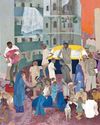It’s time to build safe spaces for our children, away from the dark side of the internet

“I AM TRAPPED IN THE GAME which I have been playing for the last two months. I am now in the final stage and they are telling me to commit suicide otherwise they will kill my parents. Please help me.” A Class X student from Madhya Pradesh scribbled these desperate words on his answer sheet during an examination this September. He had reached the 49th stage of the Blue Whale Challenge, a clandestine and sinister online game that pushes vulnerable young people to perform escalating acts of self-harm over 50 days, which culminates in suicide. Fortunately, the student’s call for help did not go unanswered and currently he is undergoing extensive counselling.
Although the alleged creator of the game, a 21-year-old Russian student of psychology, is languishing in jail, the phenomenon itself has spread like wildfire across Russia, Brazil and China. After crisscrossing Europe, it has now reached India. There have been reports from towns in Maharashtra, Kerala, West Bengal and Punjab, and cities like Indore and Dehradun, of young people playing this game and mutilating themselves. At least four to five of them have allegedly ended their lives.
THE GRIM REALITY
Let’s just step back and make a note of the underbelly of this sordid phenomenon. The World Health Organization, in its 2015 findings, suggests that India has one of the highest rates of suicide in the world. A study published in The Lancet recently noted that 62,960 young people, between the ages of 10 and 24 years, committed suicide in one calendar year (2013) in India. This is most certainly an underestimate, as many families tend to conceal such incidents. It is estimated that every hour one student ends her or his life. Suicide is the number one cause of death amongst this age group in India, ahead of road accidents, the main cause in the rest of the world.
この記事は Reader's Digest India の November 2017 版に掲載されています。
7 日間の Magzter GOLD 無料トライアルを開始して、何千もの厳選されたプレミアム ストーリー、9,000 以上の雑誌や新聞にアクセスしてください。
すでに購読者です ? サインイン
この記事は Reader's Digest India の November 2017 版に掲載されています。
7 日間の Magzter GOLD 無料トライアルを開始して、何千もの厳選されたプレミアム ストーリー、9,000 以上の雑誌や新聞にアクセスしてください。
すでに購読者です? サインイン

BOOKS
Books review

STUDIO - Off Lamington Road by Gieve Patel
Oil on Canvas, 54 x 88 in

NEWS FROM THE WORLD OF MEDICINE
FOODS THAT FIGHT DEMENTIA

TO HELL AND BACK
The Darvaza crater in Turkmenistan is known as the Gates of Hell. I stood on its edge - and lived to tell the tale

THE SNAKE CHARMERS
Invasive Burmese pythons are squeezing the life out of Florida's vast Everglades. An unlikely sisterhood is taking them on

Sisterhood to Last a Lifetime
These college pals teach a master class in how to maintain a friendship for 50-plus years

...TO DIE ON A HOCKEY RINK
ONE MINUTE I WAS PLAYING IN MY BEER LEAGUE, THE NEXT I WAS IN THE HOSPITAL

Just Sit Tight
Broken, battered and trapped in a ravine for days, I desperate driver wonders, \"Will anyone find me?\"

Allow Me to Mansplain...
If there's one thing we know, it's this: We're a nation of know-it-alls

THE BITTER TRUTH ABOUT SUGAR (AND SUGAR SUBSTITUTES!)
It's no secret that we have a serious addiction. Here's how to cut back on the sweet stuff, once and for all.